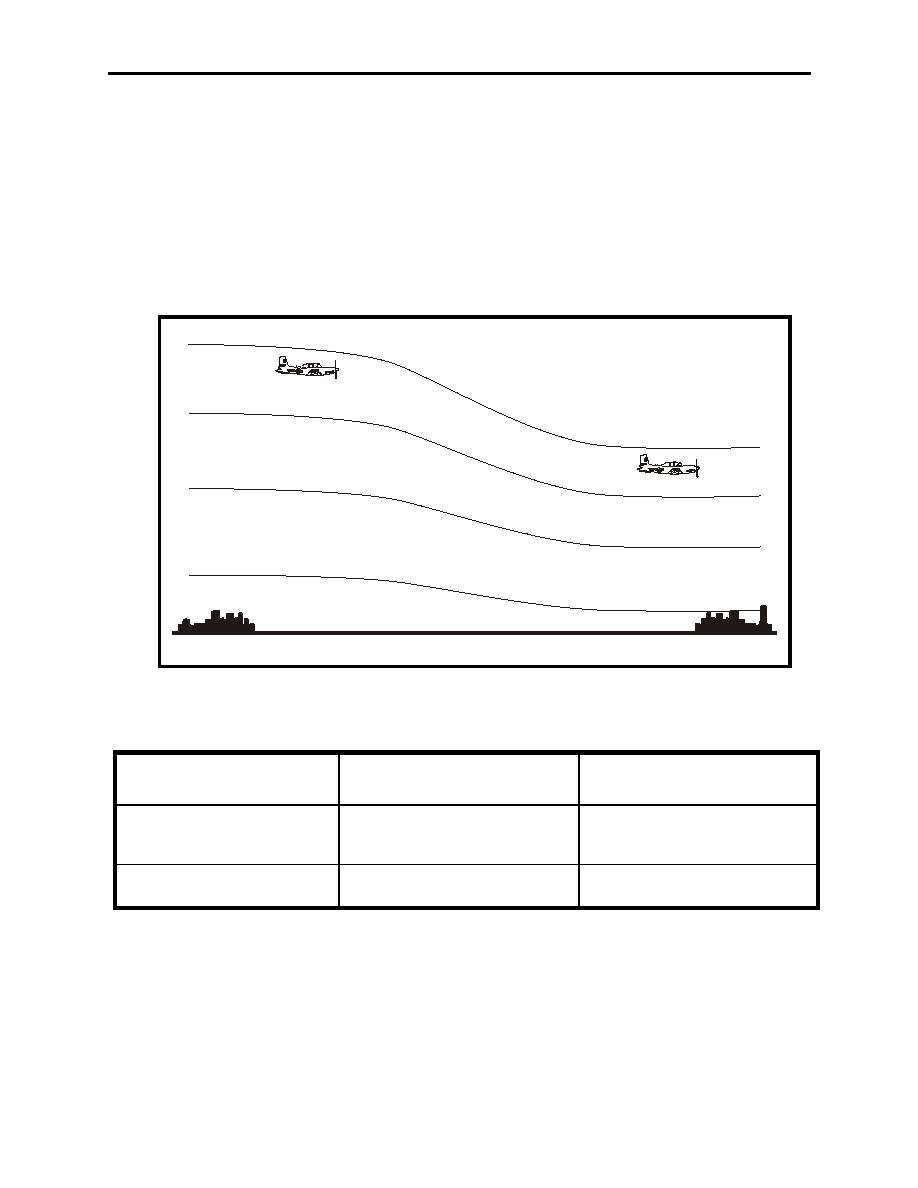 |
|||
|
|
|||
|
Page Title:
Figure 1-3 Path of Aircraft Flying A Constant Indicated Altitude with Decreasing Temperature |
|
||
| ||||||||||
|
|  AVIATION WEATHER
CHAPTER ONE
Temperature
Aircraft altimeters are calibrated for a standard lapse rate. An incorrect altitude indication will
result if the temperature deviates from the standard. For every 11C that the temperature varies
from the standard, the altimeter will be in error by 4%. If the air is colder than the standard
atmosphere, the aircraft will be lower than the altimeter indicates. If the air is warmer than
standard, the aircraft will be higher than the altimeter indicates (Figures 1-3, 1-4, and 1-5). You
may notice the rules presented in the pressure section, above, also apply to temperature
deviations.
700mb
800mb
Warm Air
900mb
Cold Air
900mb
Pensacola
Jacksonville
Sea level pressure at both towns is 1013.2mb
Figure 1-3 Path of Aircraft Flying A Constant Indicated Altitude with Decreasing
Temperature
TEMPERATURE
ALTIMETER
ACTUAL MSL ALTITUDE
CHANGE
Flying from standard temp.
Indicates higher than actual
Lower then indicated
toward lower temp.
Flying from standard temp.
Indicates lower than actual
Higher than indicated
toward higher temp.
Figure 1-4 Temperature Deviation vs Indicated and MSL Altitude
Figures 1-3 and 1-5 show that as you fly from warm to cold air, an altimeter will read too high
and the aircraft is lower than the altimeter indicates. Over flat terrain, this lower true reading is
no great problem; other aircraft in the vicinity are also flying indicated altitudes resulting from the
same temperature and pressure conditions, and the altimeter readings are compatible because the
errors result from the same conditions.
General Structure of the Atmosphere, and Atmospheric Temperature and Pressure 1-5
|
|
Privacy Statement - Press Release - Copyright Information. - Contact Us |